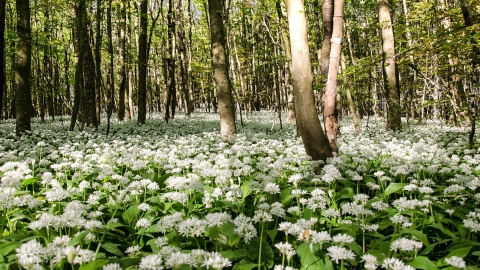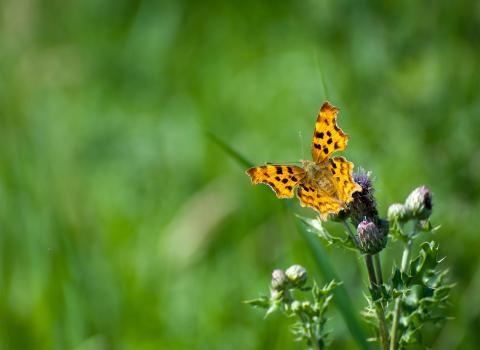
Harston Wood
Location
Know before you go
Dogs
When to visit
Opening times
Open at all timesBest time to visit
March to MayAbout the reserve
Highlights
- The woodland ground flora looks spectacular in the spring, with the scent of wild garlic and its white flowers carpeting the ground. Look out for twayblades along the disused tramway.
- Walk beneath the wooded canopy along the disused tramline for a wonderful pleasant day out at any time of the year.
Nature’s Industry
At almost a mile long Harston Wood is one of the Trust’s longest nature reserves. Although only a short section of footpath passes through the reserve itself you can follow the boundary of the reserve along it’s entire length using the abandoned tramway from Froghall Wharf car park.
The tramway was originally built to carry limestone from the quarries at Caldon Low to the canal and limekilns at Froghall Wharf. What would have historically been a busy tramway has now been reclaimed by nature over the years. The surrounding woodland has grown out over the track and provides a pleasant, shady summer walk. Look out for twayblades growing on the sides of the tramway in early summer.
Flora and fauna
Harston Wood itself is situated on a steep sided valley, sandwiched between the tramway and the Shirley Brook, a tributary of the River Churnet. The reserve is part of the Churnet Valley Site of Special Scientific Interest, which is over 300 hectares all together. In common with many of the woodlands in the area, Harston Wood is an ancient woodland which has been woodland for at least 400 years. Ancient woodlands are special since they support a particular range of plants and trees which are often slow to colonise more recent woodlands. Sanicle (a small member of the same family as cow parsley), dog’s mercury, wild garlic and small-leaved lime are all indictors of long-established woodlands.
The majority of the woodland is ash dominated with patches of alder carr in the more waterlogged areas. The ash woodland supports the richest variety of tree species – look out for elm, guelder rose, hazel and small-leaved lime. Oak trees are more common in the drier areas – see if you can spot the different woodland types in the area as you walk along the tramway!
The ground flora is similarly rich in flowers with wild garlic growing in abundance in spring. Other typical woodland species include yellow archangel, wood anemone, greater woodrush and wood sorrel. Twayblade and broadleaved helleborines, two unusual plants, can be found along the edge of the woodland adjacent to the tramway.
The woodlands of the reserve and surrounding area are rich in birdlife. Listen out for woodpeckers, all three species have been recorded here, and watch out for treecreepers and nuthatches creeping up (or down) the sides of tree trunks. Visit at dusk and you’ll probably hear the hoots of tawny owls.
Managing for the future
The steep, wet banks of the reserve make this a particularly hazardous site to work in and woodland management is therefore fairly limited. Over the last ten years the Trust’s volunteer teams have been gradually working through the woodland to remove sycamore. Sycamore is a relatively new addition to the Churnet Valley woodlands and can start to dominate the canopy if left unchecked in the long term. Thinning throughout the woodland has selected out the sycamore and provided gaps in the canopy for regeneration of a wider range of species.
There is some evidence of historic coppicing on part of the reserve. Coppicing is a way of harvesting wood from woodlands whilst leaving the cut stump (stool) to regrow for future harvesting. See if you can see some old coppice stools as you walk through the valley.
A Living Landscape
This nature reserve is part of the Churnet Valley Living Landscape
'Living Landscapes' is The Wildlife Trusts innovative approach to nature conservation and involves focusing our efforts on improving the wider landscape to make it better for wildlife. Find out more here





